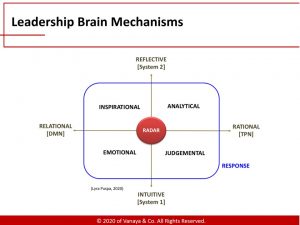
A short text message from a client opened-up a world of understanding for me on the impact a coaching conversation can have.
In my wonderings with Ak Sabbagh, my coaching colleague at Beckon Business, I often reflect on how much visible evidence clients see from their coaching sessions and how little evidence I see! My perspective is usually on ROI – revenue shifts and increased capacity and behavioral shifts and the like. I base this on “the more time I put in the more benefit the client will see!!” Ak so often asks me “what would you see if you took another perspective that wasn’t time based but impact based? For instance, the client’s well-being may be just as valuable to them as the revenue shift they get and it doesn’t matter how much or how little time you spend, it is still very valuable.” Quoting from Ak – “a short conversation can bring about significant awareness if the client is in that space.” Let me explain…
Situation:
- I made a ‘quick’ call to check-in with the client who was finishing up a heavy week during COVID. No agenda on my part other than to check the client’s well-being heading into the weekend.
- It had been a difficult week with one of the client’s staff causing a lot of friction in the team when everyone was busy. The processes in a tightly-managed, highly-geared business were being overlooked by this particular staff member.
- My client felt highly frustrated, which was demonstrated by being short-tempered and angry in front of the team. Not only that this client was going through some health issues, which added to the stress and feelings of overwhelm, etc.
Invitation: Would you like to talk about it?
- Unload – In a few, short sentences my client unloaded all the frustration, disappointment and anxiety burdening the week. Much of the disappointment was about ‘going back to where we were a year ago’ and the sudden awareness that the disappointment felt was with their reactive behaviour.
- Slow-down – Slowing down, pausing and questioning helped this client see they were not back where they were a year ago and significant shifts had been made in the overall team’s growth. It was this one staff member that hadn’t shifted.
- The self-judgement in my client had been high at the beginning of the conversation and shifted to a considered responsible action at the end of our 30 minute conversation. I finished it there.
Revelation: A few minutes after hanging up I received a text message with screen shots:
“[My Blood Pressure and Pulse] this morning when I arrived at work”

“and [my Blood Pressure and Pulse] after talking to you.”

“…..Thank you for your care, knowledge and support.”
The shifts in Blood Pressure and Pulse rate were significant for my client. I have heard Lyra Puspa, neuroscientist and leadership coach speak about the impact a coaching conversation can have on a person’s heart rate and blood pressure, but never considered it as ROI in my coaching.
In short, what I have learnt is that there can be much value in short conversations. Quality not quantity always wins the day!
Margaret Armitage







